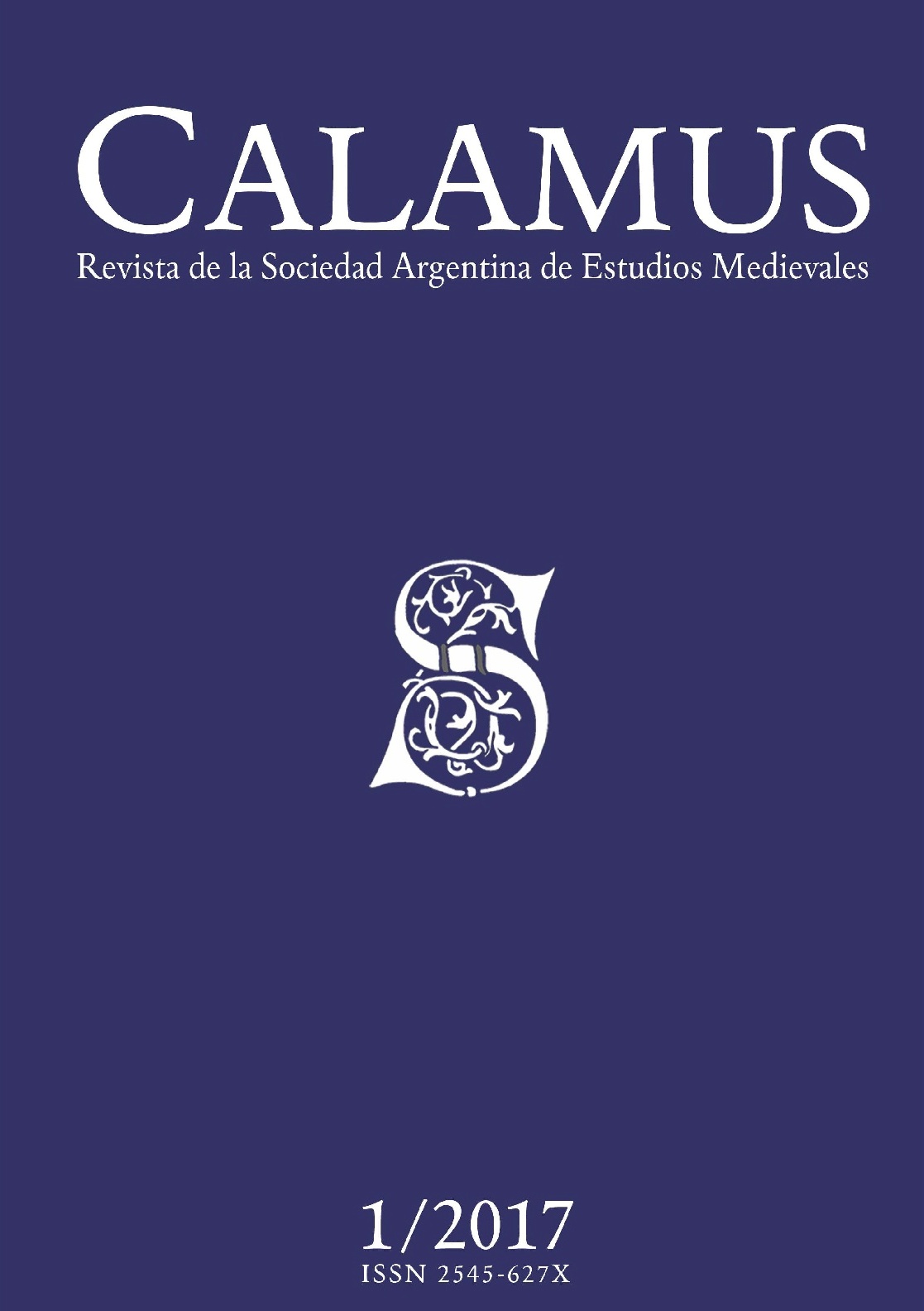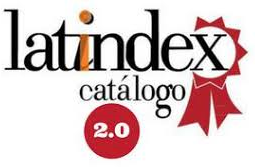A ideia de paganismo de Adam de Bremen em suas Gesta Hammaburgensis
Resumen
O presente artigo aborda um problema central no estudo da cultura escandinava no período que antecede sua introdução à dinâmica histórica da Europa Cristã, no século XI, a saber, o caráter das suas práticas religiosas. Seu objetivo, no entanto, restringe-se à investigação da percepção que o cônego e historiógrafo Adam de Bremen registra em suas Gesta Hammaburgensis, e dos ideais subjacentes à representação oferecida por este. Para tanto, faz-se uso dos princípios metodológicos da Vorstellungsgeschichte. Os resultados apontam assim para alguns dados distintos dos predominantes na academia e levantam algumas questões centrais na abordagem dos relatos acerca da religiosidade “viking”.
Citas
Adam de Bremen (1917b), Hamburgische Kirchengeschichte, 3ra. ed. Hannover: Hahn. [Disponível online].
Andrén, A. (2013), “The significance of places: The Christianization of Scandinavia from a spatial point of view”, World Archaeology 45:1, pp. 27-45.
Augustinus, A. (1993), De civitate Dei: Libri XXII (Vol. I, Lib. I-XIII), 5ta. ed. Stuttgard: Teubner. [Disponível online].
Boyer, R. (1992), Les Vikings: Histoire et civilization. París: Plon.
Brink, S. (2001), “Mythologizing Landscape: Place and Space of Cult and Myth”, em Stausberg, M. (ed), Kontinuitäten und Brüche in der Religionsgeschichte: Festschrift für Anders Hultgård zu seinem 65. Geburtstag am 23.12.2001, 2da. ed. Berlín: de Gruyter, pp. 76-112.
Brink, S. (2007), “How uniform was the Old Norse religion?”, em Quinn, J., Heslop, K. e Wills, T. (eds.), Medieval texts and cultures of Northern Europe,Vol. 18. Learning and understanding in the Old Norse world. Essays in honour of Margaret Clunies Ross. Turnhout: Brepols, pp. 105-136.
Brink, S. (2013), “Die Christianisierung Skandinaviens”, em Stiegemann, C., Kroker, M. e Walter, W. (eds), Credo: Christianisierung Europas im Mittelalter. Petersberg: Michael Imhof, pp. 250-260.
(1842) ‘CI’, em Lappenberg, J. M. (ed.), Hamburgisches Urkundenbuch: Erster Band. Hamburg: Perthes, Besser & Mauke, pp. 96-98.
Ferguson, R. (2010), The hammer and the cross: A new history of the Vikings. Londres: Penguin Books.
Fraesdorff, D. (2005), Der barbarische Norden. Berlín: Akademie Verlag.
Goetz, H.-W. (1979), “"Vorstellungsgeschichte": Menschliche Vorstellungen und Meinungen als Dimension der Vergangenheit”, Archiv für Kulturgeschichte, vol. 61, pp. 253-271.
Goetz, H.-W. (2006), “Constructing the past: Religious dimensions and historical consciousness in Adam of Bremen's Gesta Hammaburgensis ecclesiae pontificum”, em Mortensen, L. B. (ed.), The Making of Christian Myths in the Periphery of Latin Christendom. Copenhague: Museum Tusculanum Press, University of Copenhagen, pp. 17-51.
Goetz, H.-W. (2013), Die Wahrnehmung anderer Religionen und christlich-abendländisches Selbstverständnis im frühen und hohen Mittelalter (5. - 12. Jahrhundert). Berlín: Akademie Verlag.
Haywood, J. (1995), The Penguin historical atlas of the Vikings. Londres, Nueva York: Penguin Books.
Helmold de Bosau (1937), “Cronica Slavorum”, em Schmeidler, B. (ed.), Helmolds Slavenchronik: Anhang: Die Verse über das Leben Vicelins und der Brief Sidos, 3ra. ed. Hannover, Leipzig: Hahn, pp. 1-218.
Hultgård, A. (2008), “The Religion of the Vikings”, em Brink, S. e Price, N. (eds.), The Viking world. Londres: Routledge, pp. 212-218.
Isidorus (1982), Etimologías: ed. bilingüe. Madrid, Ed. Católica. [Disponível online].
Martinus Bracarensis (1950), “De correctione rusticorum”, em Barlow, C. W. (ed.), Martini Episcopi Bracarenses Opera omnia. New Haven: Yale University Press, pp. 183-203.
Mooyer, E. F. (1835), “Diptychon Bremense”, em Spilcker e Broennenberg (eds.), Vaterländisches Archiv des Historischen Vereins für Nieder Sachsen. Lüneburg: Herold u. Wahlstab, pp. 281-309.
Palmer, J. (2007), “Defining paganism in the Carolingian world”, Early Medieval Europe 15. 4, pp. 402-425.
Price, N. (2008), “Dying and the dead: Viking age mortuary behaviour”, em Brink, S. e Price, N. (eds.), The Viking world. Londres: Routledge, pp. 257-273.
Ranke, L. v. (1824), Geschichten der romanischen und germanischen Völker von 1494 bis 1535. Leipzig, Berlín: S. Reimer.
Raudvere, C. (2008), “Popular religion in the Viking Age”, em Brink, S. e Price, N. (eds.), The Viking world. Londres: Routledge, pp. 235-243.
Rimbertus (1884), “Vita Anskarii”, em Waitz, G. (ed.), Vitae Anskarii et Rimberti. Hannover: Hahn, pp. 13-79.
Roesdahl, E. (1998), The Vikings, 2da. ed. Londres: Penguin Books.
Rudolf e Meginhart (1829), “Translatio Sancti Alexandri”, em Pertz, G. H. (ed.), Monumenta Germaniae Historica [Scriptores rerum Sangallensium. Annales, chronica et historiae aevi Carolini]. Hannover: Hahn, pp. 673-681.
Sawyer, P. H. (1982), Kings and Vikings: Scandinavia and Europe, A.D. 700-1100. Londres, Nueva York: Routledge.
Schjødt, J. P. (2014), “Paganism and Christianity in the North: Two Religions - Two Modes of Religiosity”, em Hofmann, K. P., Kamp, H. e Wemhoff, M. (eds.), Die Wikinger und das Fränkische Reich: Identitäten zwischen Konfrontation und Annäherung. Paderborn: Wilhelm Fink, pp. 265-274.
Scior, V. (2009), Das Eigene und das Fremde: Identität und Fremdheit in den Chroniken Adams von Bremen, Helmolds von Bosau und Arnolds von Lübeck. Berlín: Akademie Verlag.
Sundqvist, O. (2003), “Siðr”, em Beck, H. et al. (eds.), Reallexikon der germanischen Altertumskunde, 2da. ed. Berlín: de Gruyter, pp. 273-276.
Sundqvist, O. e Kaliff, A. (2003), “Rituale”, em Beck, H et al. (eds.), Reallexikon der germanischen Altertumskunde, 2da. ed. Berlín: de Gruyter, pp. 32-52.
Winroth, A. (2012), The conversion of Scandinavia: Vikings, merchants, and missionaries in the remaking of Northern Europe. New Haven: Yale University Press.

Esta obra está bajo licencia internacional Creative Commons Reconocimiento-NoComercial-CompartirIgual 4.0.
Los autores que publiquen en esta revista aceptan las siguientes condiciones: 1) los autores conservan los derechos de autor y ceden a la revista el derecho de la primera publicación, con el trabajo registrado con Licencia Creative Commons Atribución - No Comercial - Compartir Igual 4.0 Internacional, que permite a terceros utilizar lo publicado siempre que mencionen la autoría del trabajo y la primera publicación en esta revista; 2) los autores pueden realizar otros acuerdos contractuales independientes y adicionales para la distribución no exclusiva de la versión del artículo publicado en esta revista (p. ej., incluirlo en un repositorio institucional o publicarlo en un libro) siempre que indiquen claramente que el trabajo se publicó por primera vez en esta revista; 3) se permite y recomienda a los autores a publicar su trabajo en Internet (por ejemplo en páginas institucionales o personales).










